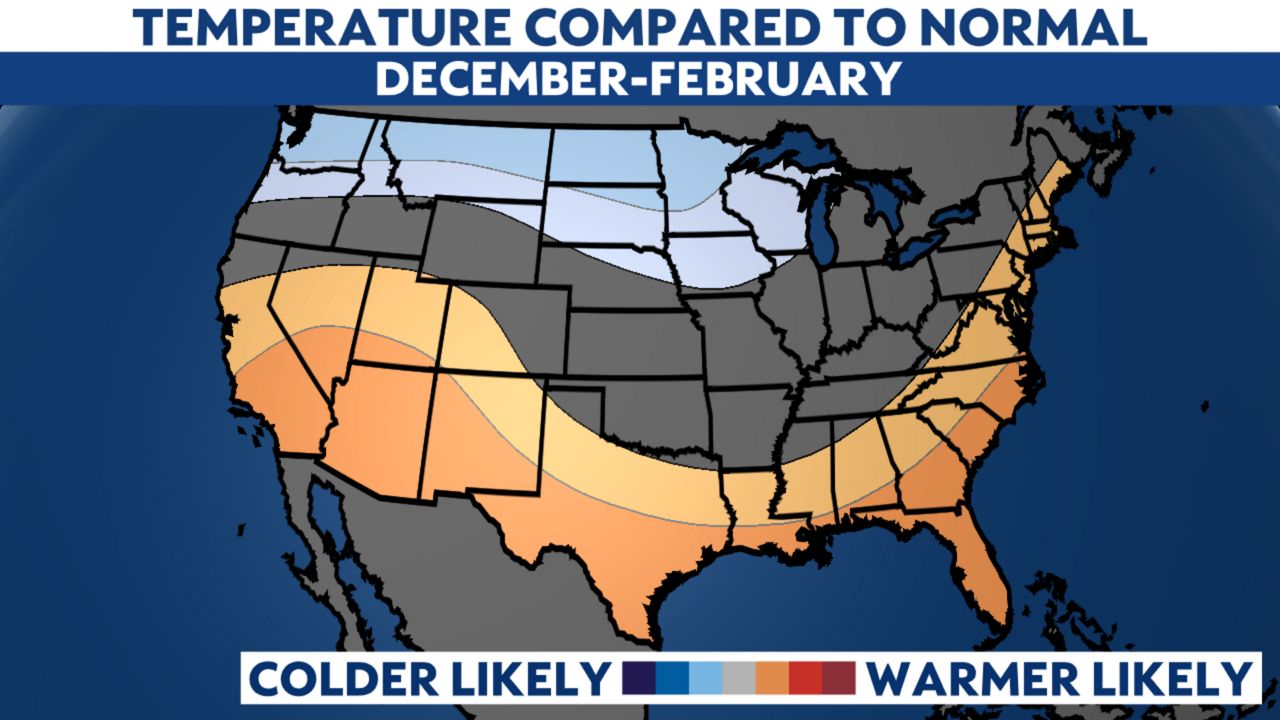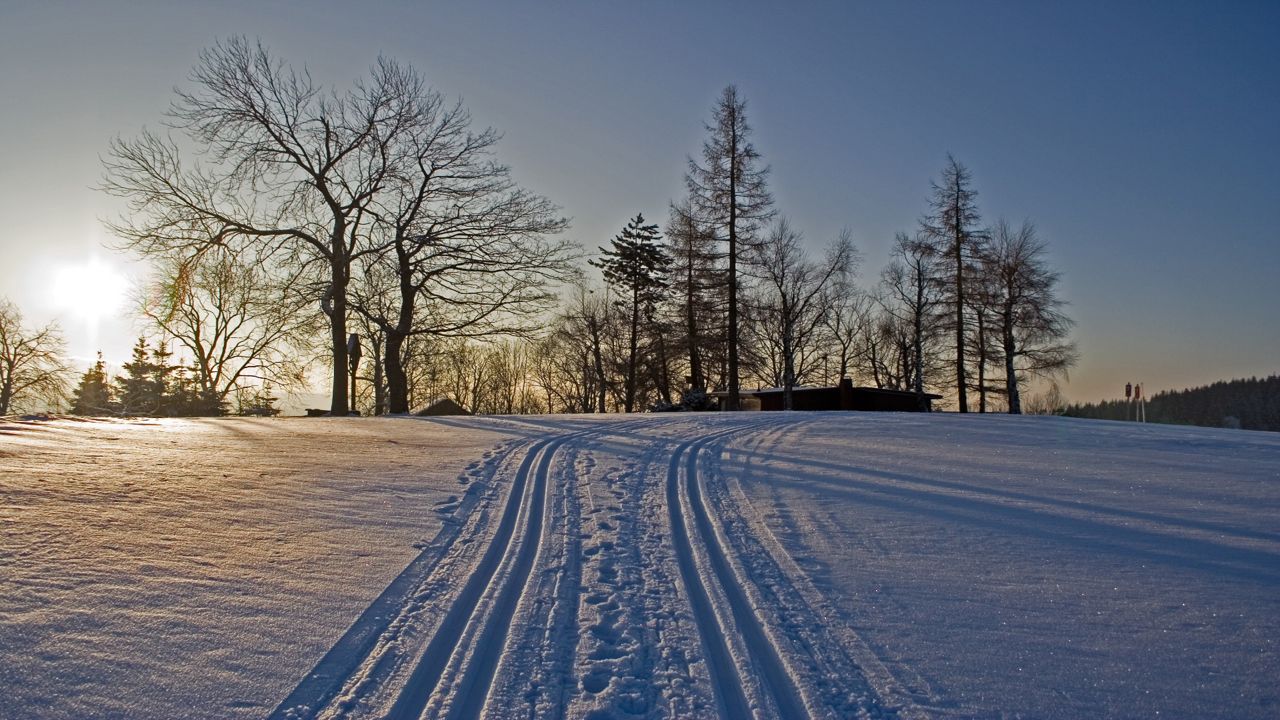Winter isn’t far off, and NOAA’s Climate Prediction Center (CPC) released its outlook for December through February.
Before we get to the winter outlook, keep two things in mind.
First, this forecast is about probabilities, not absolutes. The CPC highlights where it feels the odds of temperature or precipitation trends are leaning a certain way (if at all).
Second, the outlook considers all three months of winter averaged together. So, that means places with higher odds of a relatively mild winter shouldn’t expect no cold air at all.
For the third winter in a row, La Niña will be a driving force this winter, according to CPC’s Jon Gottschalck. That tends to bring colder air into parts of the northern U.S., while the Southeast tends to be warmer and drier than average.
Gottschalk adds that the East Coast storm track usually shifts farther west in La Niña winters, which draws warmer ocean air and moisture inland and lowers the odds of heavy snowfalls in the coastal cities.
Other large-scale weather patterns can influence conditions, though. Gottschalck says they expect quite a bit of variability in shorter-term situations such as cold air outbreaks, which are difficult to predict more than a couple of weeks beforehand.
This winter, CPC notes higher-than-normal odds of the winter temperature being colder than average across the northern tier of the country, into the Upper Midwest. Meanwhile, southern regions and the East Coast lean toward an above-average temperature.
The rest of the U.S. has equal chances of the temperatures being warmer or colder than average.

Precipitation odds favor being wetter than average in the Pacific Northwest, northern Rockies and Great Lakes. This doesn’t necessarily mean a snowier winter, since that also depends on how warm or cold it is when the precipitation is falling.
The entire southern U.S. leans toward being drier than average, particularly in South Texas. Some of these regions are already in drought conditions, which are expected to continue or worsen. Patchy drought in the Great Lakes and Ohio Valley may end this winter.

Wondering how CPC’s winter outlook performed last year? Find out here.
Our team of meteorologists dives deep into the science of weather and breaks down timely weather data and information. To view more weather and climate stories, check out our weather blogs section.



